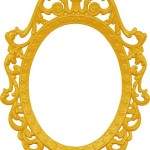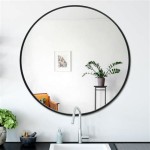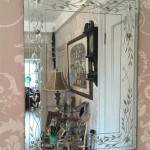Antique Dresser with Mirror Redone
Antique dressers with mirrors offer a blend of functionality and historical charm. Restoring these pieces allows for the preservation of craftsmanship while updating the aesthetic to suit modern tastes. This article explores the process of redoing an antique dresser with a mirror, covering key aspects from initial assessment to finishing touches.
Assessing the Dresser and Mirror
Before beginning any restoration work, a thorough assessment of the dresser and mirror is crucial. This involves identifying the type of wood, evaluating the existing finish, and checking for structural damage. Noting the presence of veneer, inlay, or other decorative elements is essential, as these require specialized handling. The condition of the mirror should also be assessed, looking for cracks, chips, or silvering loss. Documenting the current state with photographs provides a valuable reference throughout the project.
Determining the age and style of the dresser can inform restoration decisions. Researching similar pieces can provide insight into appropriate restoration techniques and potential value. Understanding the historical context of the piece adds another layer of appreciation to the restoration process.
Preparing the Dresser and Mirror for Refinishing
Preparation is the most critical step in refinishing. The existing finish must be removed to allow for proper adhesion of the new finish. This can be accomplished through various methods, including sanding, chemical stripping, or a combination of both. Sanding requires progressively finer grits of sandpaper to achieve a smooth surface. Chemical strippers dissolve the finish, but necessitate careful handling and proper disposal. Regardless of the method chosen, adequate ventilation and protective gear are essential.
Once the old finish is removed, any necessary repairs can be undertaken. This might include filling cracks, stabilizing loose joints, or replacing damaged hardware. Matching the original wood species for repairs is ideal for maintaining the integrity of the piece. For the mirror, professional restoration might be required for significant damage, such as resilvering or replacing broken sections.
Cleaning the dresser and mirror thoroughly after stripping and repairing is vital. A tack cloth can effectively remove dust and debris, ensuring a smooth surface for the new finish. Proper preparation lays the groundwork for a beautiful and durable finish.
Choosing and Applying the Finish
Selecting the appropriate finish depends on the desired aesthetic and the type of wood. Options include paint, stain, lacquer, varnish, and shellac. Paint provides a solid, opaque coating, while stain enhances the natural grain of the wood. Lacquer and varnish offer durable protection, while shellac provides a warm, traditional finish. Testing the chosen finish on an inconspicuous area of the dresser is recommended before applying it to the entire piece.
Applying the finish requires patience and precision. Multiple thin coats are generally preferable to a single thick coat, allowing each layer to dry completely before applying the next. Following the manufacturer's instructions for drying times and application methods is crucial for achieving optimal results. For a smooth, professional-looking finish, light sanding between coats can help eliminate imperfections.
Reattaching the mirror to the dresser requires careful handling to avoid damage. Ensuring secure and stable mounting is paramount for safety and longevity. Replacing or restoring original hardware can further enhance the overall aesthetic and value of the piece.
Addressing Hardware and Final Touches
Original hardware adds to the authenticity and charm of an antique dresser. If the original hardware is missing or damaged, sourcing replacements that match the style and period of the dresser is recommended. Cleaning and polishing existing hardware can significantly improve its appearance. Consider using specialized hardware cleaners for different metals to avoid damage.
After the finish has fully cured, a final polishing or waxing can enhance the sheen and provide additional protection. Regular dusting and gentle cleaning will help maintain the beauty of the restored piece. Avoid placing the dresser in direct sunlight or excessively humid environments to prevent damage to the finish and wood.

Incredible Antique Farmhouse Dresser Redo Diy With Spray Paint Lehman Lane

A Comfy Little Place Of My Own Antique Vanity Redo Shabby Chic Dresser Furniture

Vanity Makeovers 16 Diffe Sets Redone Prodigal Pieces Antique Table Set

The Best Way To Paint Furniture Vintage Vanity Makeover

Incredible Antique Farmhouse Dresser Redo Diy With Spray Paint Lehman Lane

Coastal Dresser Makeover Confessions Of A Serial Do It Yourselfer

Upcycled 80 S Dresser Bedroom Furniture Makeover Ornate

Antique Recreation Waterfall Vanity In White And Wood Furniture Makeover Redo

Diy Vintage Dresser With Tilt Mirror Redone

Coffee Bean Vintage Vanity Makeover Salvaged Inspirations








